 |
  |
 |
  |
Resonating traditions: The power of Odissi in a global context - Dr. Rohini Dandavate e-mail: dandavate2@gmail.com November 16, 2024 (This paper was presented virtually at the conference ODISSI ODYSSEY: Novel Research Perspectives on September 28, 2024.) 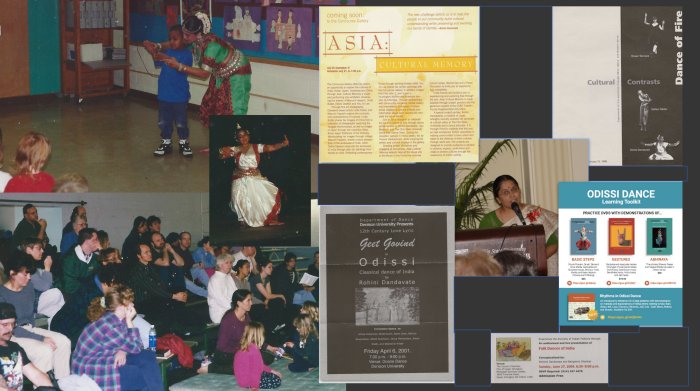 Introduction In discussing my recent work, I aimed to share how it focuses on three key aspects: fostering cultural understanding through art, engaging diverse audiences, and balancing tradition with contemporary themes that resonate with specific contexts. My experience presenting Odissi dance to multicultural audiences over the past 35 years has profoundly shaped my approach. During my graduate studies, I observed that engaging effectively with diverse audiences required selecting themes and narratives to which they could relate. This strategy not only served as a bridge for cultural connection but also guided my choice of presentation contexts. I embraced the idea of using contemporary issues as themes in my performances. By blending modern interpretations of traditional stories, I aimed to keep Odissi vibrant and encourage reflection from the audience. Tradition in context: From classical roots to contemporary relevance While we recognize the rich heritage of Odissi dance, I want to highlight its diverse purposes. Odissi is not just a performance art; it evolved as a powerful means of storytelling and conveying spiritual narratives. It preserves cultural history by passing traditions from one generation to the next. In an intercultural context, Odissi serves as a bridge, inviting audiences from diverse backgrounds to connect through universal themes and fostering empathy and understanding among communities as a medium of social communication. Odissi also allows for experimentation. By exploring contemporary themes and collaborating with artistes from diverse countries, we can keep the tradition relevant and reinterpret it to resonate with our modern, interconnected world. 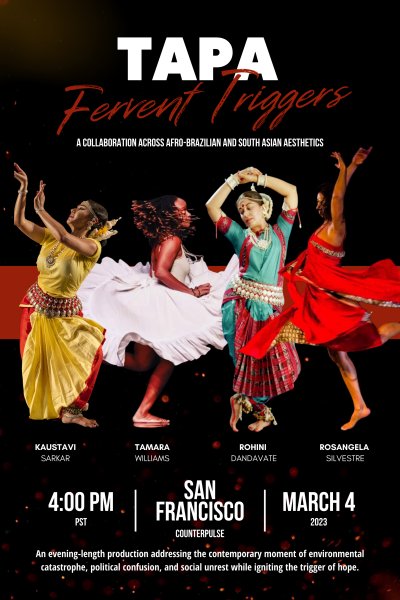 TAPA - An intercultural dance collaboration One significant experiment was TAPA, a cross-cultural dance collaboration. Motivated by pressing contemporary issues such as the pandemic, rising school shootings, and Mexican border policies, I choreographed pieces that were presented by Dr. Kaustavi Sarkar alongside the work of our Afro-Brazilian artists. This collaboration allowed us to explore these themes through movement, fostering dialogue and reflection among our audiences. TAPA comprised three dances: Fire, Trigger, and A Question. Each piece was designed to address specific themes, inviting audiences to engage with the emotional and social implications of these contemporary issues. Through powerful movement and expression, we aimed to spark conversation and reflection. Fire In the early '90s, I received funding from the Ohio Humanities Council for a project titled Cultural Contrasts, aimed at exploring various interpretations of fire across cultures. I collaborated with two modern dancers: one depicted fire within the human body, while the other examined it as a chemical process. Alongside these interpretations, I presented Agni as a source of energy, the life-giving force of the sun. After moving to California and witnessing the devastation caused by wildfires, I was inspired to delve into fire's dual nature - its constructive and destructive powers. The dance structure alternates between verses and sequences of movement, expanding the meanings of the verses through gestures, movements, and facial expressions that convey the underlying concepts. The eminent composer Ashit Desai created a melodic framework for this dance, incorporating multiple ragas - Bairagi, Desh, Bhatiyar, Tilak Kamod, Shudh Sarang, Marwa, Gurjari Todi, and Bairagi - to reflect the variety of moods and emotions portrayed in the piece. The rhythmic patterns and footwork, combined with the postures, bring to life the exquisite sculptures of the Konark temple while showcasing the unique elements of Odissi movement technique. This dance juxtaposes themes of devotion, the joy of human reunion, and the beauty of nature, ultimately concluding with a portrayal of the damage and loss caused by forest fires. My goal was to inspire viewers to reflect on their actions and consider ways to prevent such environmental calamities. Trigger The second dance, Trigger, encourages viewers to reflect deeply on the escalating menace of shootings in the U.S., resulting in the preventable deaths of innocent children. Beyond the tragic loss of young lives, teachers and caregivers also sacrifice their lives, putting themselves on the line during indiscriminate shootings. On May 24, 2022, a mass shooting occurred at Robb Elementary School in Uvalde, Texas, where 18-year-old Salvador Ramos, a former student of the school, fatally shot nineteen students and two teachers, while seventeen others were injured but survived. As the news continued to recount the stories of those lost, I processed a rollercoaster of emotions, choosing to channel my feelings through the choreography of this dance. It was a cathartic experience as I read, heard, and learned more from TV interviews with grief-stricken and inconsolable parents. Photos, letters, artwork, and toys in the children's rooms displayed their innermost desires. I aimed to project the dreams of these young children - of becoming visual artists, cheerleaders, basketball players, snorkelers, and writers - highlighting their unfulfilled aspirations alongside the pain and loss experienced by their helpless parents. The dance is set against the backdrop of a classroom scene. As children enter and prepare for their morning class, a young shooter enters and randomly begins to gun down students. The teacher pleads and tries to stop him, but to no avail. The shooter continues his rampage, ultimately killing nineteen young students and their teacher. The dance then shifts to display the beautiful dreams of the students that were left unfulfilled. By showcasing the aspirations of the fallen students and the pain of their parents, the piece aims to awaken the viewers' consciences and ignite a call for reflection, thought, and action towards introducing policies for gun control to prevent such senseless murders. The choreography incorporates both sorrowful and playful notes, utilizing various percussion, string, and wind instruments from the Indian classical tradition. The rhythmic sequences, created by Ramprasad Ganavarappu, a leading mardal player from Mumbai, use specific syllables to represent basketball and gymnastic movements. Overall, the music, composed by the renowned Anirban Bhattacharyya, elegantly links Indian traditional music with the theme of rising gun violence through different ragas and instruments. The dance concludes on a solemn note, with prayers for peace for all. A Question The third piece was based on the song Bichitro Anondo, written by Nobel laureate Guru Rabindranath Tagore. The poet questions the dichotomies of light and darkness, union and separation, and joy and sadness. Drawing from significant themes such as the pandemic, immigration policy, and environmental injustices, I elaborate on the poet's words through traditional Odissi dance. This piece emphasizes a sociopolitical dimension while also revisiting the theme of environmental pollution introduced in the first dance. This dance integrates rhythm, melody, and text, borrowing from the structure and elements of the Odissi repertoire, namely:
The three acts - Fire, A Question, and Trigger - serve as a mirror to the contemporary injustices of our society, expressed through the idiom of classical Indian Odissi. TAPA: Response: A silent dialogue between performance and audience TAPA drew a full house, with people from diverse ethnic backgrounds. As the dances progressed, a profound silence enveloped the auditorium, accompanied by contemplative expressions and, in some cases, tears - reflecting the emotions, or rasa, evoked by the performance. This cathartic response reinforced my belief that dance has the power to create a space for connection, honoring both traditional and contemporary elements while preserving the essence of tradition. It also became evident that by addressing the shared concerns of the audience, I was able to foster a deeper connection and understanding, establishing a bond that was unlike any I had experienced before. Review: Moment of catharsis "My dear friend Dr. Rohini Dandavate, a doyen of the classical Odissi tradition, addressed the contemporary moment of environmental catastrophe, political confusion, and social unrest. Her piece sparked anxious questions, which she answered with hope. The captivating blend of classical Odissi form and contemporary themes makes for a powerful call to action. At once poetic and poignant, the dances tackle complex themes with the compassion and curiosity of an artist par excellence. I walked out of the theater, stunned and inspired. The duality was searing. The pieces ask urgent questions of humanity, prompting us to consider our ability to both create and destroy. I found myself asking questions and finding answers in the work." - Manjula Nadkarni, CEO, Yuni This review reflects the profound impact of the performance, highlighting how art can resonate across cultures and foster meaningful dialogue. It underscores the transformative power of dance in addressing pressing societal issues and creating a shared emotional experience. Ek Azad Pankh My most recent choreography, inspired by the metaphor of a feather, explores a journey of curiosity. It invites the audience to reflect on the fragility of exploration and the freedom that comes with seeking new experiences. 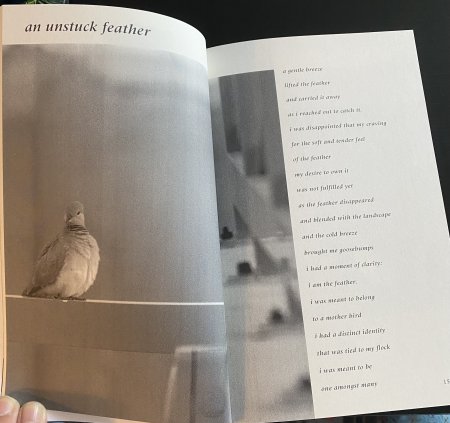 From verse to movement: Uday's poetry as a creative catalyst This piece is based on the poem The Unstuck Feather, written by my husband, Uday. In the poem, he recounts a fleeting encounter with a feather drifting atop a mountain in San Francisco. He reaches out to catch it but misses, watching it float away on a cool breeze. This moment sparks his imagination, leading him to reflect on his personality and his quest for meaning. The journey of the unstuck feather symbolizes his own life experiences. The emotions conveyed in his poem inspired me to choreograph a dance piece. I began my process by researching the symbolism of feathers across different cultures and reflecting on how Uday's portrayal in the poem mirrored his deeper reflections. 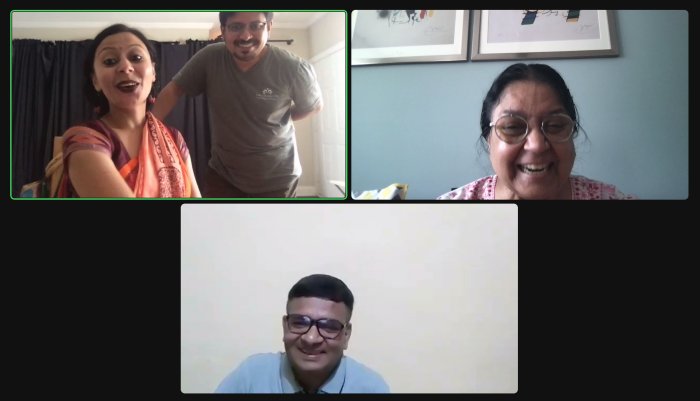 My collaborators Dr. Kaustavi Sarkar, Dr. Anirban Bhattacharyya, and Ramprasad Ganavarappu - my collaborators on this project - each brought elements of their personal journeys to the poem. Building on the creative synergy we had established from previous collaborations, we enthusiastically conceptualized the dance and music, eager to interpret and unravel its meanings through movement and rhythm. Despite residing in four cities across two countries, we maintained regular communication via Zoom and social media. Our weekly meetings were vital, fostering rich discussions and the exchange of ideas regarding the concept, structure, form, movement, and music composition. Framework: Weaving words and movement into a cohesive story After several attempts to choreograph the piece using the English version of the poem, it became clear that the words didn't align with the envisioned music. We approached Uday to translate the poem into Hindi, and he generously created a framework of keywords summarizing the central themes of each stanza. This allowed us to select stanzas that preserved the poem's sequence while also choosing additional episodes to enhance the narrative. With this framework in place, I was able to conceptualize the dance, weaving Uday's reflections and emotions into graceful movements and expressions within a specified time frame. The diagram below illustrates Uday's keyword framework. 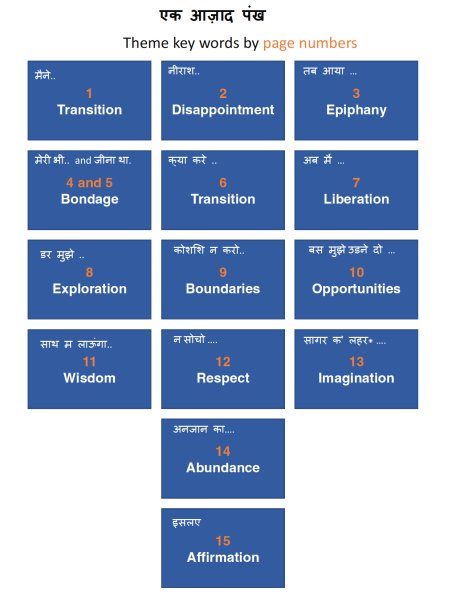 To craft a cohesive narrative, we linked the keywords from the stanzas, using them as the Sthayi (the initial phrase of a melodic composition in Hindustani music). We then expanded on the main ideas through rhythmic sequences (nritta) and expressive gestures (abhinaya), incorporating symbolism and interpretation based on my envisioned narrative. The storyline conveyed a sense of awe and the poet's profound understanding of reality through the simplicity of a feather. Uday's insights and his appreciation for nature's boundless beauty inspired me to weave a tale that also included experiences shared by all project partners. The diagram below illustrates the selected stanzas incorporated into the dance narrative. 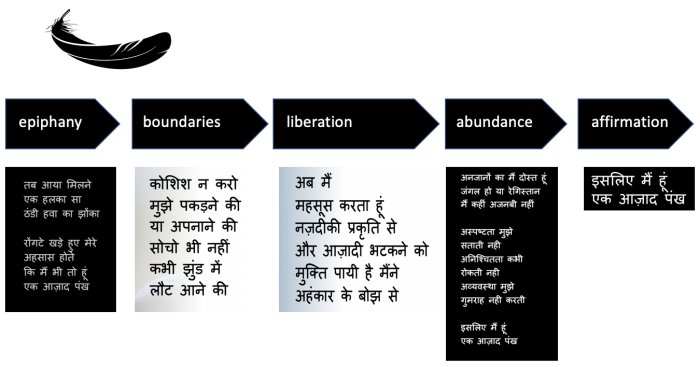 The Narrative I began the narrative-writing process by exploring the symbolism and meanings of feathers across various cultures. My research revealed a range of interpretations, showing that feathers are often seen as symbols of universal love - a gentle force that allows itself to be carried by the wind, landing softly beside you. In spiritual contexts, feathers signify a connection to higher realms and divinity. Linked to birds, they symbolize not only physical flight and freedom but also mental and spiritual liberation. Drawing from these rich symbolisms and beliefs, I expanded upon the spontaneous and insightful verses of Uday's poem to craft my narrative. Visualizing scenes, I used the expressive and vivifying movements characteristic of Odissi dance. Ram's syllabic beats and Anirban's arrangement of swaras provided melodious patterns in meter and rhythm, enriching Uday's evocative prose. With the feather as the central motif in Uday's poem, I wove episodes symbolizing love, the gentle breeze, freedom, independence, limitless possibilities, guardian angels, transcendence, hope, and liberating energy. Through movement and verse, I conveyed the poem's themes, illustrating how feathers represent the freedom of the mind and heart, as well as the ability to navigate life's journey with adaptability and grace. The Influence of multicultural experience: Navigating global stories through dance Reflecting on my journey from childhood to adulthood, I see a tapestry of experiences that have profoundly shaped and nurtured my creativity and imagination. Born to Gujarati parents in Cuttack, I was immersed in both Gujarati and Odia cultures. At home, I absorbed traditional Gujarati practices, while outside, I explored the rich Odia traditions through dance training at Kala Vikash Kendra. This dual cultural foundation provided fertile ground for diverse opportunities. Traveling and performing across India further enriched my understanding of the country's myriad cultures. Moving to Mumbai and marrying into a Maharashtrian family expanded my cultural horizons even further. This multicultural journey took on a global dimension when my husband and I relocated to the U.S. My graduate studies at The Ohio State University, where I also served as a Graduate Teaching Assistant for courses on "Ethnic Arts: A Means to Intercultural Communication," deepened my appreciation for social and cultural diversity among communities worldwide. Engaging with multicultural spaces Engaging in these multicultural spaces nurtured my ability to appreciate diverse values and beliefs. This awareness enabled me to craft a narrative for the dance that resonated deeply with Kaustavi, an immigrant in the U.S. I felt like a flock of feathers, freely navigating shared contexts and embracing the unknown while traversing the varied experiences life offers. The narrative I created became an amalgamation of an immigrant's evolving worldview and reflections - a celebration of multiculturalism and the universal human experience. Music composition and structure: From notes to movement Initially, we outlined specific parameters for the duration, structure, and emotional essence of the dance piece. As I envisioned the music, memories of soft, chilly breezes, the chirping of birds, and the rustling of leaves from our mountain trails came to mind. I could picture jumping rabbits, small creatures in the grass, butterflies fluttering around bushes and flowers, and the harmonious hum of bees. These sensory elements provided a rich backdrop for the dance. Drawing inspiration from the distinctive qualities of the feather, I conceptualized movement sequences that mirrored the poem's mood and imagery. With these visualizations in mind, Anirban began composing musical segments for each verse, carefully considering rhythm, tempo, and dynamics to align with the Chaturang structure. We chose to work with raga Hameer, a composition that evokes enthusiasm and courage. Its primary note, Dhaivat, serves as a strong foundation, allowing Ram, our talented percussionist, to create powerful rhythmic patterns that resonate with the spirit of the raga. Within the structure of the Chaturang, each section plays a vital role in crafting a rich musical tapestry. The Pada section, with its evocative lyrics, captures the essence of the poem, inviting the audience to connect with the emotions expressed. The Sargam (or swara malika), featuring musical notes, adds a melodic dimension, offering a sequence of sounds that are both intricate and beautiful. The Tarana, characterized by tuneful renditions of specific syllables such as "odani," "todani," and "tadeem," introduces a playful yet structured element. This section showcases the fluidity of the raga, allowing for improvisation and creativity, while the bols - syllabic beats on percussion - anchor the performance, providing a rhythmic pulse that energizes the piece. Together, these elements merge into a cohesive auditory experience, creating peaks and troughs that enhance the emotional depth and narrative arc of the performance. Each transition and interaction between the sections draws the audience deeper into the story being told, evoking a spectrum of feelings - from joy and exhilaration to introspection and reverence. By working with raga Hameer, we not only celebrate its traditional roots but also invite the audience to experience the dynamic interplay of music and emotion, demonstrating the timeless relevance of this art form. 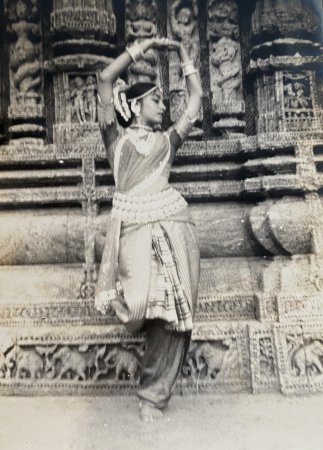 Conclusion: Dance as a bridge for understanding and reflection My career in Odissi dance has been a serendipitous journey. Growing up immersed in this art form, my family nurtured my passion and instilled in me a deep appreciation for Odissi's rich cultural heritage. My time in the U.S. has been both rewarding and challenging. Adapting to a new environment has deepened my understanding of the tradition I represent. Through performances and interactions with diverse audiences, I've witnessed how art transcends borders and connects people. This journey has forged lifelong relationships across nations, enriching my perspective and inspiring me to share the beauty of Odissi with a broader audience. I've come to realize that the values of discipline, dedication, and community inherent in this tradition are universal, fostering a sense of shared humanity. In conclusion, my journey in presenting Odissi to intercultural audiences has reinforced the importance of art as a vehicle for cultural exchange and understanding. Through works like TAPA and other pieces created in response to contemporary issues, I strive to honor tradition while also addressing the pressing concerns of our time. By fostering empathy and reflection, dance becomes a powerful means of bridging divides and inspiring change. My hope is that these performances will continue to resonate and encourage dialogue among diverse audiences, furthering our collective understanding of the world we share. 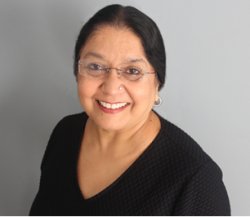 Odissi artiste Dr. Rohini Dandavate earned her doctorate degree in Cultural Policy and Arts Administration from The Ohio State University. Her Gurus were Dr. Menaka Thakkar, Raghunath Dutta, Ramani Ranjan Jena and Kelucharan Mohapatra. Rohini develops workshops and curriculum for educational institutions and community organizations that foster appreciation of cultural diversity through the experience of traditional arts. She has produced multimedia learning resources for Odissi dance instructors and students and has published papers and articles on issues relating to Odissi dance, Arts administration, Cultural Policy and dance education. Post your comments Pl provide your name and email id along with your comment. All appropriate comments posted with name and email id in the blog will be featured in the site. |